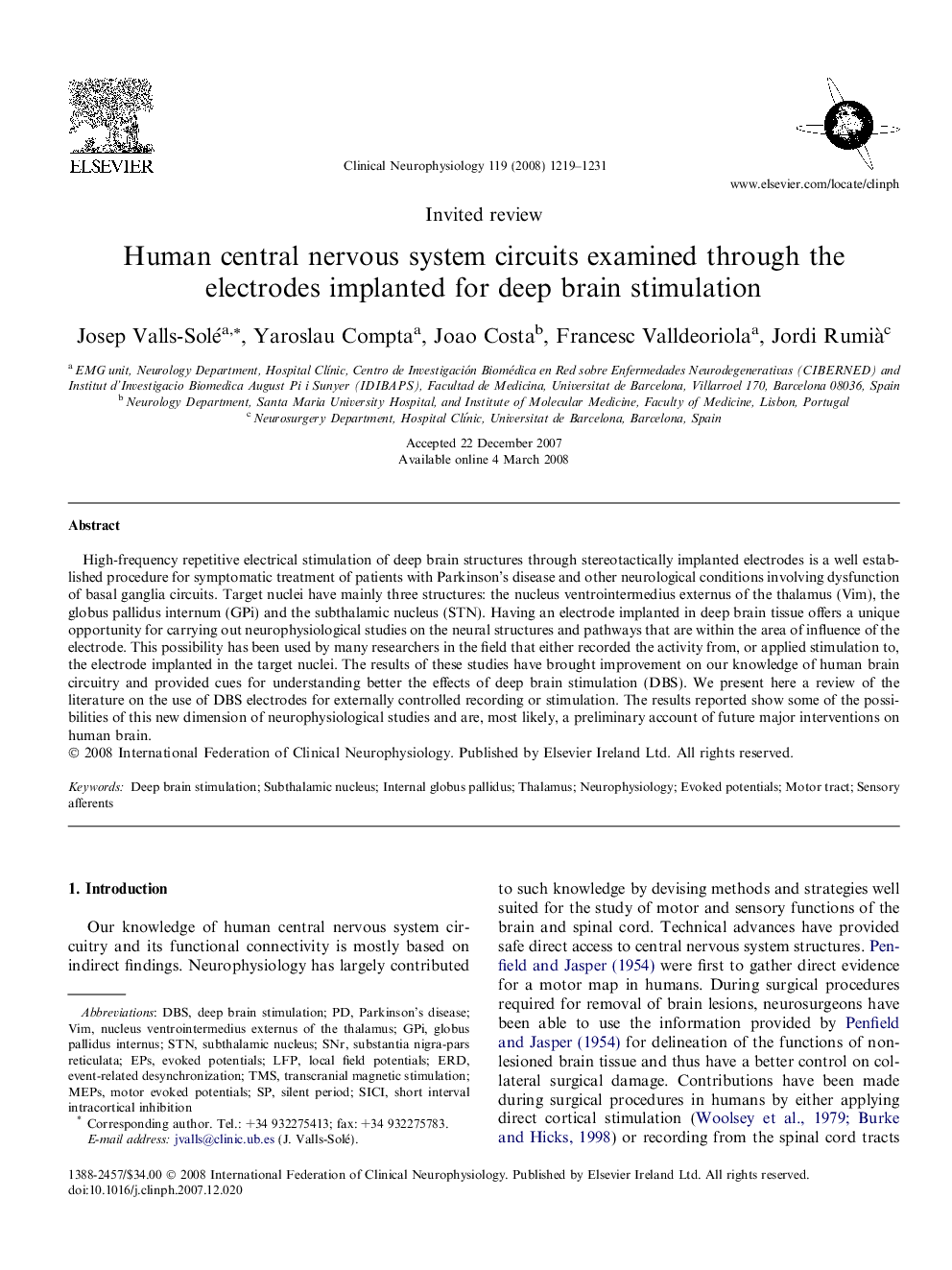| Article ID | Journal | Published Year | Pages | File Type |
|---|---|---|---|---|
| 3047440 | Clinical Neurophysiology | 2008 | 13 Pages |
High-frequency repetitive electrical stimulation of deep brain structures through stereotactically implanted electrodes is a well established procedure for symptomatic treatment of patients with Parkinson’s disease and other neurological conditions involving dysfunction of basal ganglia circuits. Target nuclei have mainly three structures: the nucleus ventrointermedius externus of the thalamus (Vim), the globus pallidus internum (GPi) and the subthalamic nucleus (STN). Having an electrode implanted in deep brain tissue offers a unique opportunity for carrying out neurophysiological studies on the neural structures and pathways that are within the area of influence of the electrode. This possibility has been used by many researchers in the field that either recorded the activity from, or applied stimulation to, the electrode implanted in the target nuclei. The results of these studies have brought improvement on our knowledge of human brain circuitry and provided cues for understanding better the effects of deep brain stimulation (DBS). We present here a review of the literature on the use of DBS electrodes for externally controlled recording or stimulation. The results reported show some of the possibilities of this new dimension of neurophysiological studies and are, most likely, a preliminary account of future major interventions on human brain.
